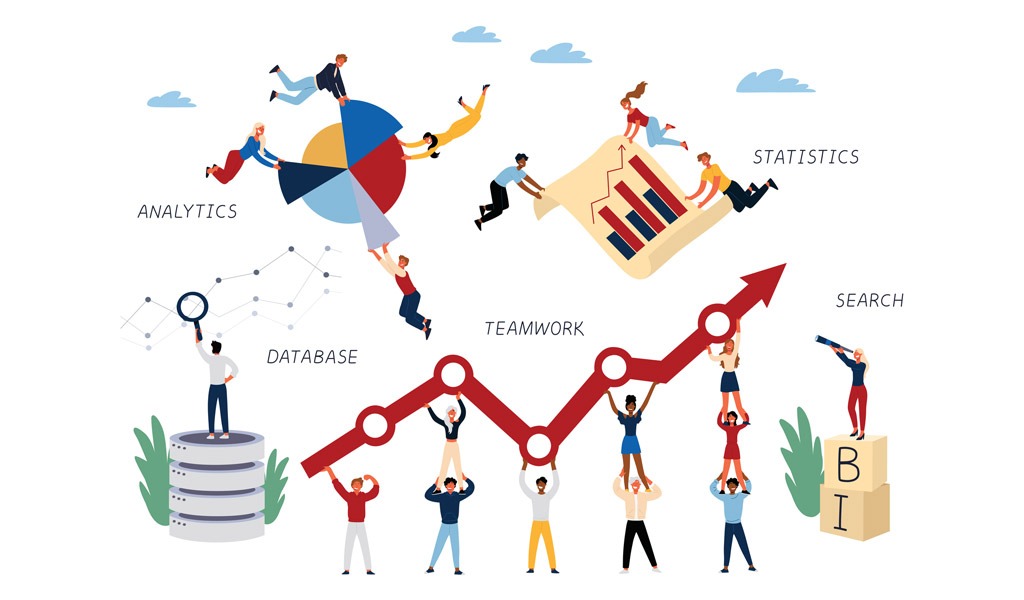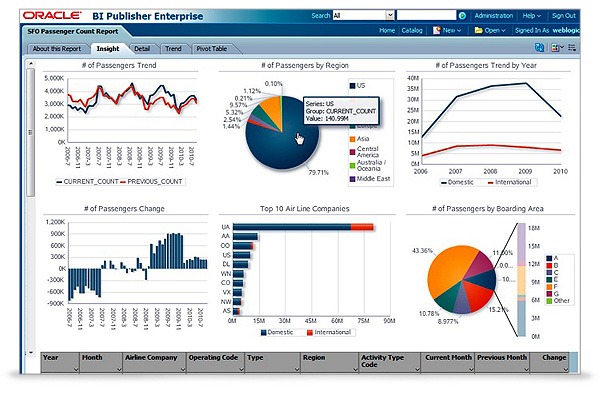
Apr 10, 2022
0 Comment by ViewersHow about we have a more intensive look at how banking and finance institutions can use business intelligence (BI) answers to drive profitability, diminish risk, and gain an upper hand?

We should have a more intensive glance at how banking and finance institutions can use business intelligence (BI) answers to drive profitability, diminish risk, and gain an upper hand.
In the exceptionally cutthroat fintech industry, using the full effectiveness of an institution is important. Banks can diminish ongoing expenses, and expand existing assets and aptitude by analyzing the operational interaction.
For instance, business intelligence tools can generate huge internal efficiencies by analyzing the performance of deals staff, tellers, account directors, and so on. It additionally helps to comprehend the development examples to minimize the opportunity of repeatability.
Tracking individual income streams to determine profitable and non-profitable services and products, setting key benchmarks for essential measurements like the quantity of net new customers and their profitability, comparing them against industry guidelines, and tracking them towards defined objectives are a few significant degrees where business intelligence assumes a game-changing role for increasing productivity, which prompts support organization profit.
Moreover, developing more viable marketing and sales crusades through definite and precise customer segmentation according to expenses, profits and services utilized and identifying profitable customers are additionally conceivable through business intelligence arrangements.
In a continually changing financial world, banking institutions need to depend more on reality-based significant information, gathered from consistently increasing data resources and to diminish risk at every possible opportunity. Business intelligence gives noteworthy information that financial institutions can use to relieve risks in a few regions. Tracking customer exchange histories empowers banks and fin-tech industries to quickly recognize and decrease false exercises (I.E. Visa misrepresentation).
Another gamble moderation benefit business intelligence tools give is precisely estimating the gamble of customer advances given such key rules as the customer’s earning limit as well as current financial resources, prevailing monetary environment, and so forth. Business intelligence can likewise be utilized to investigate credit reports and reveal expected conceivable outcomes of violations early so protection moves can be made.
Data analysis is another business intelligence approach that can likewise examine patterns in customer delinquency, from which new arrangements can be created to lessen the pace of delinquency cases in the future.

Insecurity and extortion identification are two other areas where business intelligence and investigation play a critical role. Misrepresentation has been a significant issue in this sector all along. To the rescue, social examination plays a significant role in identifying the false ways of behaving.
An examination can identify and follow designs that could reveal fraudsters’ usual methodology. Therefore, banks and other fin-tech industries could establish safeguards to prevent such fraudulent activities.
We can also use the data to improve automated misrepresentation anticipation protocols, which will reduce the number of genuine exchanges mislabeled as false. When genuine clients encounter such problems, they often perceive it as a negative encounter, leading to a potential loss of customers for the business.
Other fin-tech sections should be prepared with so many measures as well. Cybercriminals will view fin-tech services as an ideal target due to their abundance. Proper execution of business intelligence and investigation can guide anticipatory methodologies.
With the force of BI and investigation, banks can quantify different business performances and KPIs in various regions, including workers, branches, products, marketing, efforts, and so forth. With the insightful information in the data, an organization can distribute spending plans and set new objectives for allocating assets.
Business intelligence can also be used to monitor progress towards achieving set targets. The information derived from the data can also provide valuable insights for developing new product strategies that align with customer interests.
A-list business intelligence arrangements enable banking institutions to accurately and efficiently segment their customer base based on their understanding of customer needs and attitudes towards banking. As a result, developing, implementing, and offering new market-leading financial products and services helps to gain and maintain an upper hand.
By analyzing the data stored in the central banking CRM in light of the scope of customer segmentation, both topographically and demographically, a business can recognize its reliable customers. We can investigate the customer base to assess profitability across branches and products, enabling us to identify new strategic pitches, upsell opportunities, and adjust marketing strategies accordingly.
According to research, the cost of selling new banking products and services to an existing customer is multiple times lower than to a new customer. Also, strategically pitching strengthens customer connections and dedication.
Fin-tech institutions can further increase customer satisfaction examinations by proactively harnessing data to give clients prevalent insight into their momentary activities, allowing them to all the more effectively deal with their finances by having both a constant understanding of installments and a continuous understanding of spending.
This will empower customers to more effectively oversee their finances by being ready to follow and investigate their spending and earning patterns.
Furthermore, analyzing customer point-of-contact data can assist an institution in understanding customer opinions and ways of behaving in order to effectively and productively fulfill customer needs and requests.
Business intelligence software permits fin-tech industries to follow individual income streams to determine precisely which products and services are profitable and which are not. Additionally, scrutinizing a vast quantity of customer data to understand their needs and perspectives on banking provides valuable insights for enhancing services and products.
Business intelligence insights can help banks and fintech industries identify the reasons why customers switch to competitors. This provides fintech institutions with the necessary information to implement advanced systems to prevent customer loss. Tracking customer tendencies, propensities, and ways of behaving also allows banking and fintech associations to customize products and services in various ways to meet their customers’ needs, resolve problems, and advance customer dependability and retention.
Historical analysis is an unquestionable requirement for banking and other financial associations. To foresee the future, banks need to take a look at past internal and external data, which will help them plan for the future. Business intelligence can also assist with identifying designs, addressing issues going forward, and setting objectives that improve upon historical measurements.
The executive dashboard of any BI arrangement helps end clients visualize the data using diagrams, graphs, activities, and so forth through customizable interfaces. Supervisors can run inquiries and pull reports, depending on their needs. They can investigate the level of credits by type, month-to-month operating costs, profit, and misfortune by area, which will provide them with an unmistakable perspective on the business.
In order to stay competitive, banks need to implement business intelligence arrangements and integrations, which equip them with the ability to identify fraudulent activity, manage risks, and reduce costs, among other benefits. Modern consumers now access business intelligence from companies that excel in internet business platforms, online entertainment, or mobile phone creation, and they anticipate a similar level of personalized insight from their financial and banking service providers.
Going forward, those fintech institutions that take on and completely use BI answers to oversee risk, increase operational productivity, and provide products and services that meet genuine customer needs will be better positioned to appreciate sustained development, profitability, and an upper hand in the long run.